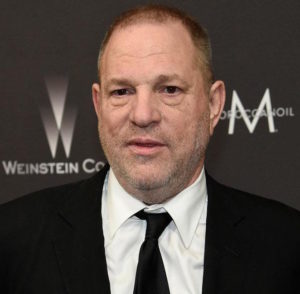This week I’m at the Western Social Science Association annual conference. I’m giving a presentation on the explosion of stories in the news media about sexual harassment by high profile men, especially those in the media industry. Rather than writing a conventional conference paper, I will have series of blog posts covering my topic over the next day or so.
Resetting the Agenda:
How Sexual Harassment & Assault
Became The Story of 2017
ABSTRACT: In the fall of 2017, it seemed as though there was a new story of a powerful man in media or politics being outed for sexual misconduct on almost a daily basis. The story became a powerful narrative leading to Time magazine declaring the Person of the Year for 2017 to be “The Silence Breakers” – the women (and men) who have spoken out about suffering sexual abuse. This paper looks at how sexual harassment and abuse became the dominant story of late 2017, and how media organizations dealt with a narrative that cut directly into their business.
Introduction:
In my intro to mass comm textbook, Mass Communication: Living in a Media World, I have a series of principles of media literacy. They cover a range of topics that range from the incredibly obvious – “Media are a central component of our lives.” – to the somewhat more subtle – “Nothing’s new: Everything that happens in the past will happen again.”
But by far the most significant of these Seven Secrets They Don’t Want You To Know About the Media (which I think sounds infinitely more interesting than Seven Principles of Media Literacy) is Number 3 – “Everything from the margin moves to the center.”
When I introduce this principle, I note:
“One of the mass media’s biggest effects on everyday life is to take culture from the margins of society and make it into part of the mainstream, or center. This process can move people, ideas, and even individual words from small communities into mass society.”
Over the last year, attention to the issue of sexual harassment and abuse has become the major cultural stories for our media, both sensational and serious, have moved this issue from the margins of society to the center. While there could be many points on the timeline we could highlight as the start of the media’s focus on sexual harassment and abuse, it is often connected to when multitudes of women started coming forward and telling their stories of mistreatment at the hands of Hollywood producer Harvey Weinstein.
In fact, the New York Times started keeping track of the number of men who have been fired or forced to resign over accusations of sexual misconduct since Weinstein was fired from the company that bears his name in early October.
As of Feb. 8, 2018, the Times count had reached 71. The Times had a second list of 28 men who had faced charges of sexual misconduct but who had only been suspended or similar lesser punishment. The list was a Who’s Who of the powerful behind and in front of the scenes in the entertainment business, industry, and politics.
In addition to producers, these men included writers, actors, editors, comedians, senators, congressmen, dancers, radio hosts, journalists, photographers, bloggers, and just about every other media or government job description you could come up with.
So if Oct. 8, 2017 is the start of the explosion of this story with the firing of Weinstein, it certainly wasn’t the start of the story. According to the Times, the accusations and rumors about Weinstein date back for three decades. It wasn’t as though these stories weren’t known about by reporters, they simply weren’t reported.
So this leaves us with the question:
Why, after years of neglect, did the press in all its varied forms, suddenly start paying attention to these accusations, and the women making them?
While this paper is not an in-depth data analysis of how the story spread, I think we could consider answering this question using a couple of different theoretical approaches:
- Agenda Setting: As I write in my book: [Agenda setting] theory holds that issues that are portrayed as important in the news media become important to the public—that is, the media set the agenda for public debate. If the media are not able to tell people what to think, as the direct effects model proposed, perhaps they can tell people what to think about. Agenda-setting theorists seek to determine whether the issues that are important to the media are also important to the public. Central (if oversimplified) point – people take their cues from the media as to what the most important stories are that they should attend to.
Critical/Cultural Theory: Critical theory defies the easy explanation of agenda setting, but can be summarized with the following principles:
- There are serious problems that people suffer that come from exploitation and the division of labor.
- People are treated as “things” to be used rather than individuals who have value.
- You can’t make sense out of ideas and events if you take them out of their historical context.
- Society is coming to be dominated by a culture industry (what we might call the mass media) that takes cultural ideas, turns them into commodities, and sells them in a way to make the maximum amount of money. This separates ideas from the people who produce them.
- You cannot separate facts from the values attached to them and the circumstances from which these facts emerged.
Sexual Harassment & Assault:


